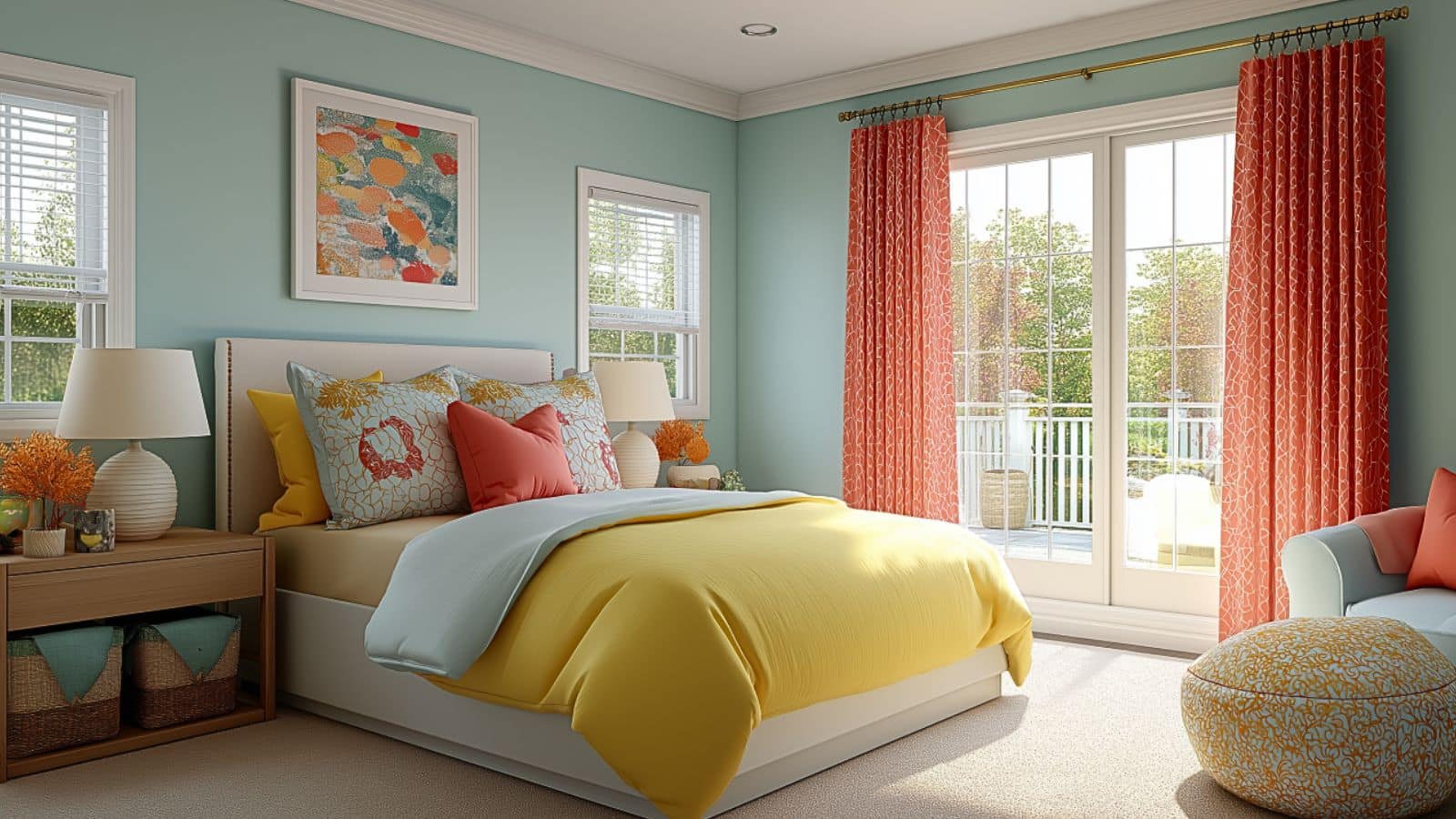Colorful Kids Bedroom Inspiration That Pops with Personality and Style
Table of Contents
Children’s bedrooms are more than just places to sleep—they’re vibrant spaces for imagination, growth, and self-expression. Whether your little one is an aspiring astronaut, a budding artist, or a dinosaur enthusiast, their bedroom should reflect who they are. But creating a space that’s as playful and energetic as they are doesn’t mean sacrificing style.
According to a recent interior design report, over 70% of parents say their child’s bedroom is one of the most personalized spaces in their home. That’s no surprise: a thoughtfully designed room helps foster creativity, independence, and comfort. The key? Balance bold color with clever functionality.
This blog post is your ultimate guide to colorful kids bedroom inspiration that truly pops with personality. We’ll explore creative themes, color palettes, storage hacks, furniture ideas, and playful accents that can grow with your child. Whether you’re designing for a toddler, a grade-schooler, or a tween, these tips will help you build a joyful space that reflects their interests while remaining stylish and practical.
Get ready to turn their room into a wonderland that’s equal parts color, comfort, and character.
Pick a Bold Color Palette That Sparks Joy
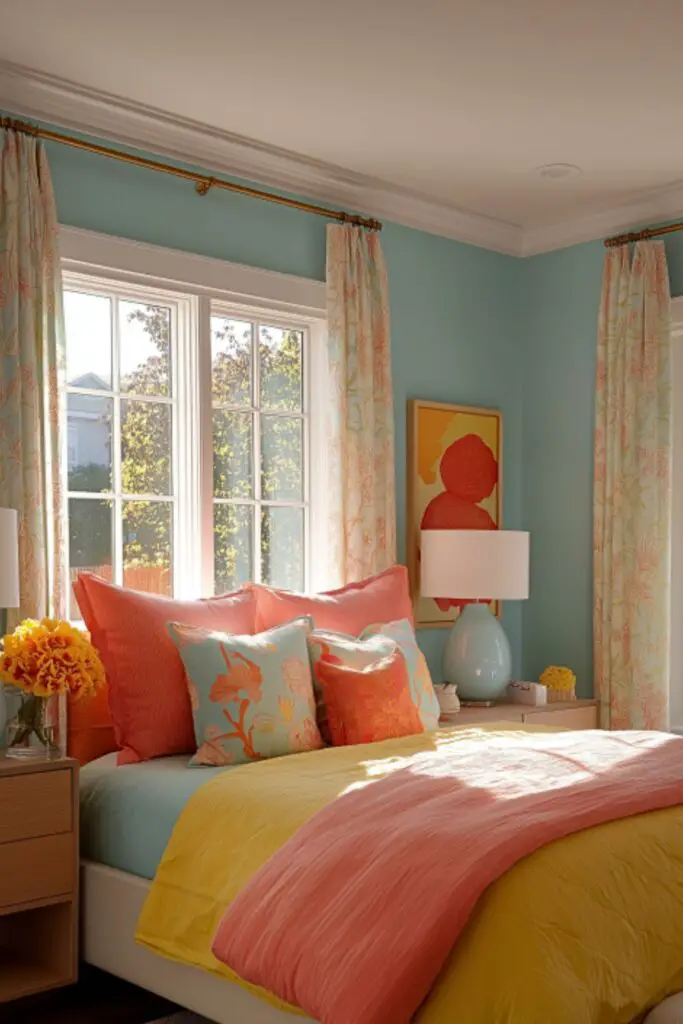
Choosing the right color scheme sets the tone for your child’s entire bedroom. But instead of defaulting to predictable pinks or blues, think outside the crayon box. Bold color doesn’t have to be overwhelming—it can energize a space while creating zones for rest and play.
Start with one or two dominant colors your child loves. Sunshine yellow, seafoam green, tangerine, or cobalt blue can serve as the base. Then add neutral anchors like white, soft gray, or wood tones to keep things grounded. Accent walls are a great way to introduce color without painting the entire room—try stripes, color-blocking, or murals for added flair.
Color also influences mood. Reds and oranges evoke energy, while blues and greens have calming effects. Consider your child’s personality and daily routine when selecting shades.
Table: Color Moods and Their Effects in Kids’ Rooms
| Color | Mood It Creates | Ideal Use In Room |
|---|---|---|
| Bright Yellow | Cheerful, optimistic | Accent wall, bedding, artwork |
| Aqua Blue | Calm, imaginative | Wall paint, area rug, curtains |
| Coral | Energetic, fun | Pillows, lampshade, wall decals |
| Lavender | Relaxing, dreamy | Bed linen, ceiling, reading nook |
| Apple Green | Fresh, lively | Storage bins, furniture accents |
Design with a Fun Theme That Grows with Your Child
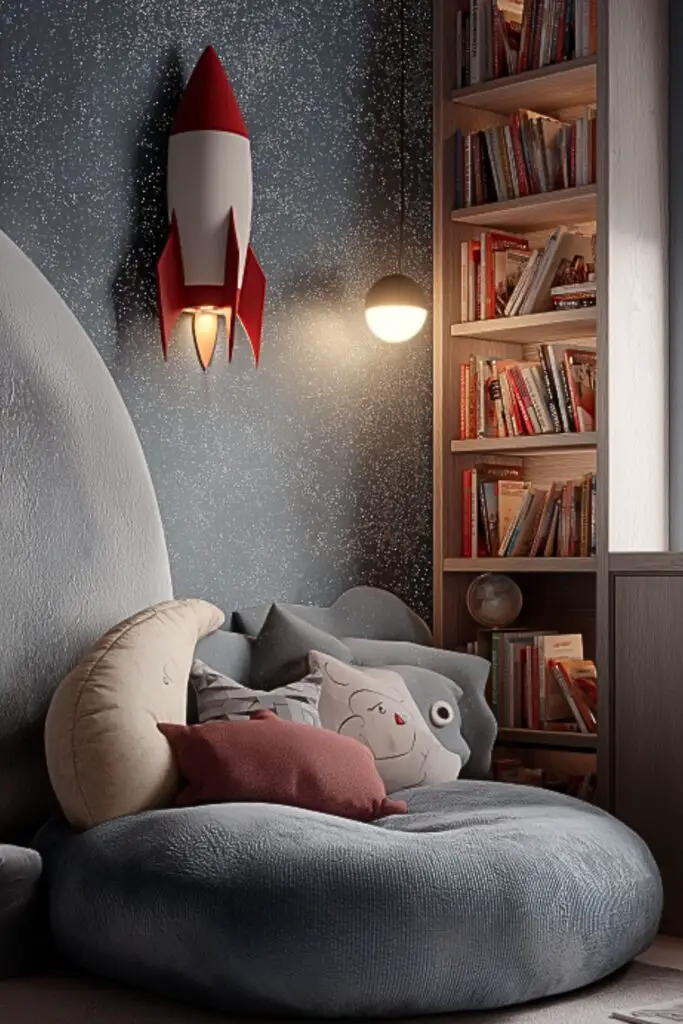
Themes make decorating more cohesive—and more fun! But the key is choosing a concept flexible enough to grow with your child over time. Instead of overly literal themes (like cartoon characters that may quickly become passé), opt for broader ideas that can evolve.
Popular timeless themes include outer space, jungle adventure, under the sea, travel, art studio, and fairy tale forest. These offer a strong visual identity while allowing creative freedom. Start with a feature element—like a wallpaper mural, shaped headboard, or themed light fixture—then layer in accessories like art, toys, or textiles that reinforce the vibe.
The best themes are open-ended and engaging. For example, a space room can include a solar system mobile today and a constellation projector tomorrow. A jungle theme might start with animal prints and evolve into nature-inspired textures and green walls.
Table: Adaptable Bedroom Theme Ideas
| Theme | Key Elements | How It Can Evolve |
|---|---|---|
| Space Explorer | Planet wall art, star decals | Add telescope, constellation bedding |
| Artist’s Studio | Chalkboard wall, bright art supplies | Introduce gallery wall or DIY display |
| Jungle Safari | Leafy wallpaper, plush animals | Upgrade to natural textures and colors |
| Ocean Escape | Wave motifs, fish-themed bedding | Grow into marine biology posters |
| Woodland Hideaway | Tree decals, cozy tent nook | Add bookshelves and neutral textures |
Use Storage That Doubles as Decor
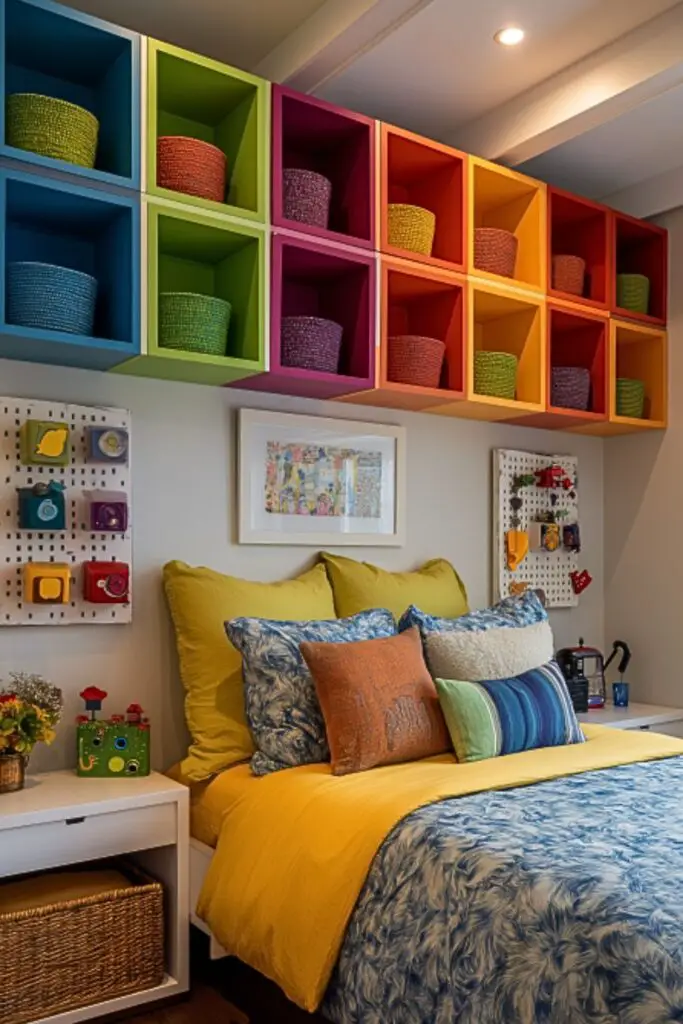
One of the biggest challenges in any child’s room is managing the clutter that comes with toys, books, and ever-changing interests. The solution? Storage pieces that work as part of the design.
Choose colorful bins, open shelving, and storage benches that fit your room’s theme and color palette. Use cubbies to organize toys by category, and label baskets for easy clean-up. Woven baskets add texture, while clear acrylic containers make it easy to find what’s inside. Wall-mounted shelves or peg rails can display favorite items like action figures, trophies, or dress-up clothes.
Opt for multi-functional furniture: beds with built-in drawers, ottomans that open up, or desks with concealed compartments. These not only save space but also encourage tidiness by making organization fun and accessible.
Table: Kid-Friendly Storage Ideas
| Storage Item | Function | Visual Benefit |
|---|---|---|
| Colorful Cubby Shelves | Sort toys, books, games | Adds playful pattern and order |
| Fabric Bins with Labels | Hide clutter while organizing | Adds personality through colors |
| Under-bed Drawers | Seasonal clothing or toys | Keeps room looking clean and spacious |
| Wall Pegboards | Hang bags, hats, or art | Customizable and creative |
| Toy Chest with Cushion | Seating + hidden storage | Blends form and function seamlessly |
Incorporate Interactive Zones for Play and Creativity
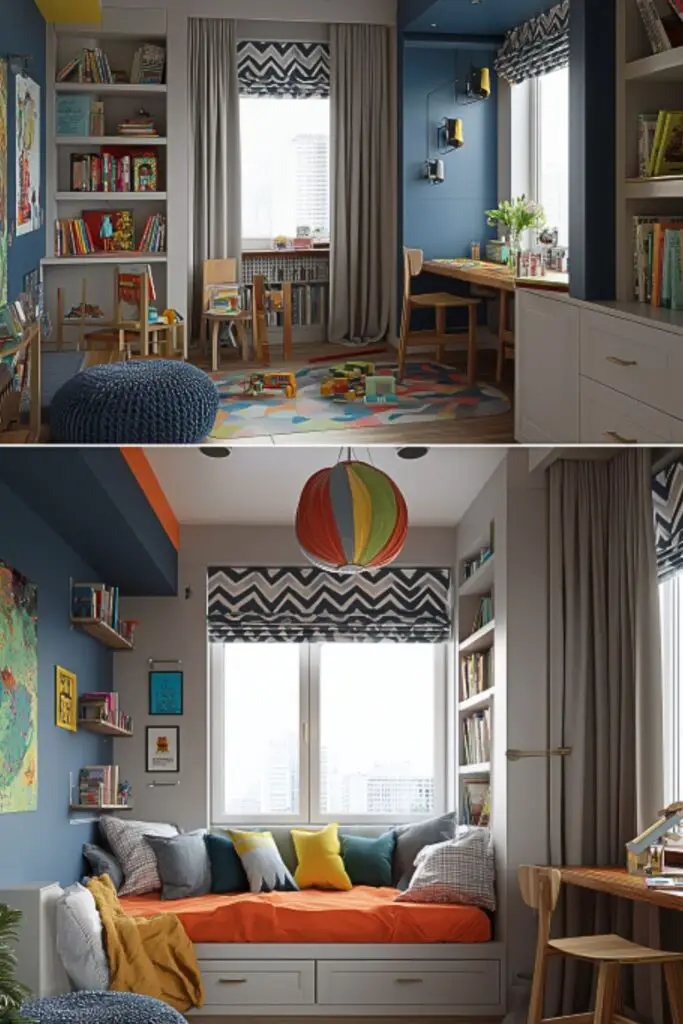
Children thrive in environments that invite exploration and creativity. Designating specific zones for play, rest, and work within the bedroom helps your child feel empowered—and keeps chaos under control.
The reading corner can feature a cozy bean bag, floating shelves filled with books, and soft lighting. Add a canopy or small tent to make it feel magical. A craft or art station might include a child-sized table, a rolling cart with supplies, and wipeable surfaces for stress-free fun.
Don’t forget the importance of movement. A mini rock-climbing wall, swing chair, or hopscotch rug encourages active play indoors. Chalkboard paint on a closet door can become a creative outlet that changes daily.
When defining zones, use rugs, colors, or shelving to visually separate areas while keeping the overall space cohesive. This approach works well in both small and large bedrooms.
Table: Room Zones and Their Key Features
| Zone Name | Purpose | Recommended Elements |
|---|---|---|
| Reading Nook | Quiet time, self-soothing | Bookshelf, soft rug, cushions |
| Art Station | Creative expression | Desk, supply organizer, easy-clean mats |
| Play Area | Physical and pretend play | Toy bins, activity rug, wall decals |
| Rest Zone | Sleep and relaxation | Bed, calming lights, blackout curtains |
| Display Zone | Show off creations or awards | Corkboard, picture ledge, wall clips |
Let Artwork and Wall Decor Reflect Their Personality
Walls are prime real estate in a child’s room—and they’re the perfect spot to let personality shine. Think of them as a rotating canvas that evolves with your child’s age, interests, and passions.
Start with framed prints or posters that match the room’s theme or your child’s hobbies—like dinosaurs, ballet, music, or world maps. Peel-and-stick wall decals are an affordable way to make a big impact and are easy to swap as preferences change. For a personalized touch, consider custom name banners, painted initials, or a wall-mounted letter board for quotes or messages.
Display your child’s own artwork prominently. A gallery wall with clipboards, wire hanging systems, or magnetic boards turns their creations into decor, building confidence and ownership of the space. Add fairy lights or colorful washi tape for a whimsical twist.
For budding learners, use wall art that doubles as educational tools—alphabet posters, multiplication tables, or maps can serve both function and flair.
Table: Types of Wall Decor and How to Use Them
| Wall Art Type | Style or Function | Best Placement |
|---|---|---|
| Framed Art Prints | Theme-based visuals | Above desk, bed, or dresser |
| Peel-and-Stick Decals | Temporary and fun | Accent walls or closet doors |
| Personal Art Gallery | Display child’s own creations | Rotating wall section |
| Educational Posters | Informative and colorful | At eye level in desk or play zone |
| Name or Monogram Signs | Custom and personal | Headboard wall or reading nook |
Invest in Whimsical Lighting to Set the Mood
Lighting plays a huge role in how a room feels, especially one meant to balance play and rest. Bright overhead lights are essential for general visibility, but adding layers of lighting creates warmth, comfort, and magic.
Consider installing a ceiling fixture with a fun twist—like a colorful paper lantern, star-shaped pendant, or rainbow chandelier. Then layer with smaller sources: string lights, LED light strips under shelves, bedside lamps with playful shades, or nightlights in fun shapes.
For bedtime, use soft, dimmable lights to wind things down. Clip-on reading lights let kids read quietly without flooding the room in brightness, while glow-in-the-dark decals or projectors add an imaginative nighttime vibe.
Opt for energy-efficient bulbs in warm tones and make sure switches are within reach, especially for younger children learning independence.
Table: Types of Lighting and Their Purposes
| Light Type | Function | Where to Place |
|---|---|---|
| Ceiling Fixture | Main illumination | Center of room |
| Bedside Lamp | Reading, calming light | Nightstand or mounted on wall |
| String Lights | Decorative and soft ambient glow | Draped over canopy or window frame |
| Nightlight Projector | Comfort and imagination | Near bed or crib area |
| LED Shelf Lighting | Highlight books or art | Under floating shelves or display units |
Conclusion
Designing a colorful kids bedroom that pops with personality is all about capturing joy and making the space feel truly theirs. From bold paint choices and flexible themes to smart storage and playful lighting, every detail plays a role in shaping a room that inspires creativity, supports growth, and reflects individuality.
What makes a child’s bedroom truly special isn’t how much you spend—it’s the thoughtfulness behind each choice. When you blend color, comfort, and purpose, you create a space where your child feels safe, proud, and endlessly inspired.
Whether you’re refreshing a few corners or starting from scratch, let their room be a celebration of who they are—and all they’re becoming.

